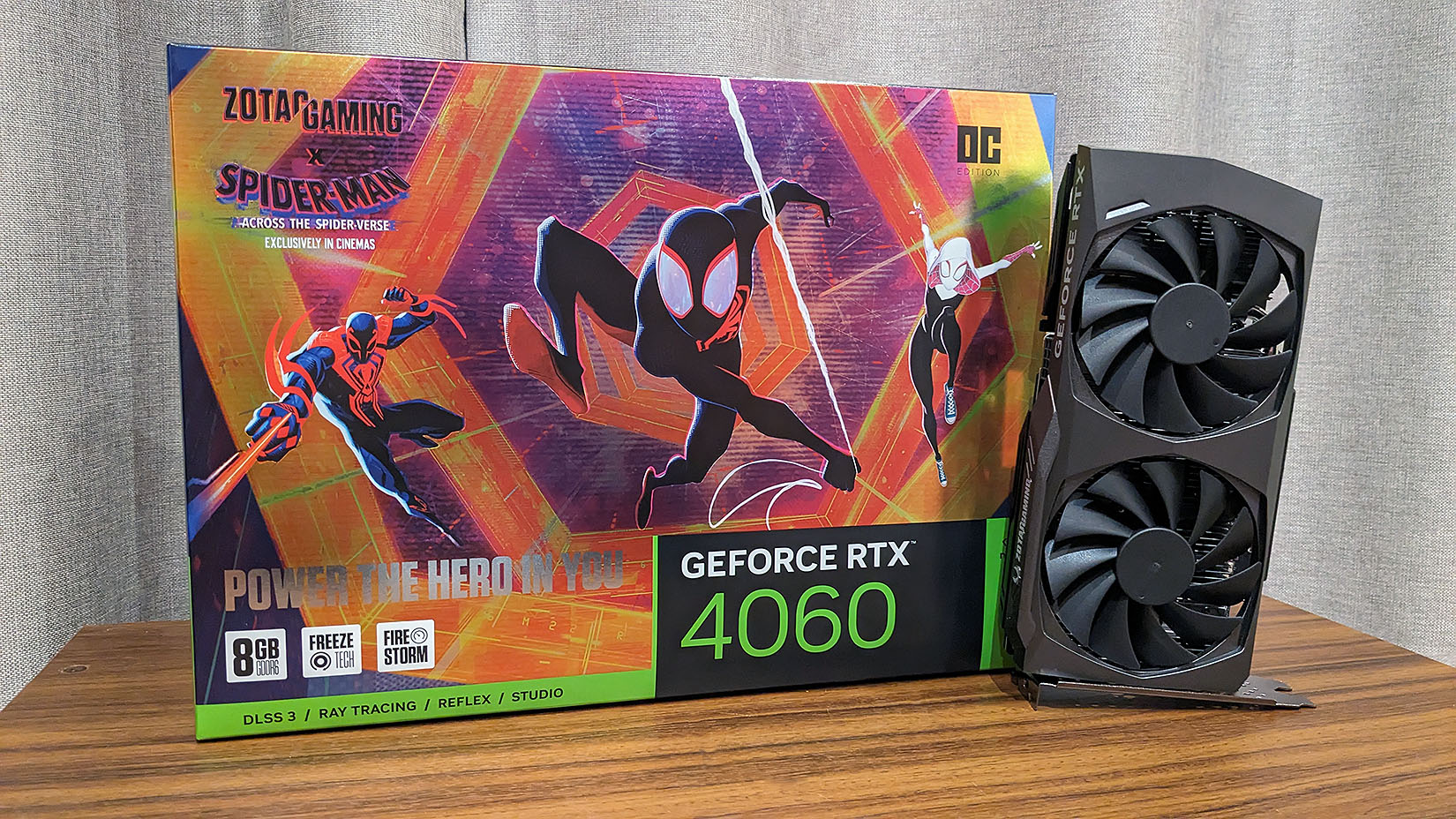Our Verdict
The Zotac RTX 4060 Spider-Man comes with a nice bundle of extras and an excellent presentation. It doesn't cost more than the base $299 RTX 4060 price either. Zotac does what it can with what the Nvidia's AD107 GPU serves up, but its a little on the audible side when under load. If you don't mind that, and you love Spider-Man, then you'll be happy with this Zotac card.
For
- Spider-Man!
- Excellent performance per watt
- Handily beats the RTX 3060 12GB
- DLSS and frame generation
Against
- The fans are noticeable under load
- Not a compelling upgrade over last gen mid tier cards
- A price drop would help
- 8GB VRAM is the minimum
PC Gamer's got your back
The new Nvidia GeForce RTX 4060 isn't a bad graphics card. It offers a competent 1080p gaming experience and it brings the best features of the Ada Lovelace architecture including DLSS 3 down to a price point that will appeal to long suffering gamers holding out for an upgrade at a worldly price.
The problem is, it doesn't do enough to impress in the way it should. And its all about the name and its price. The underlying AD107 GPU—if it followed its GA107 predecessor's product positioning—means it should be called the RTX 4050. If that was the case, and it was priced at $249 or lower, it would have received a very different reception.
It is what it is though, and at $299, the RTX 4060 is still a good upgrade if you're coming from a card that's a few years old. It's hard to forget the RTX 3060 Ti or RX 6700 XT, however, and they still present a compelling argument considering their current pricing, though they won't be around forever though.
Still, even at $299 the RTX 4060 will likely come to sell in volume, and there are a lot of partner cards to choose from, all the way from reference pricing to mega-overkill triple fan, triple slot cards. Zotac's GeForce RTX 4060 OC Spider-Man falls into the former category, featuring a smart design and appropriate cooling. Spider-Man, eh? Yes, this is a special edition RTX 4060 that will particularly appeal to fans of the webslinger. And there are a lot of you out there.
The Zotac RTX 4060 Spider-Man is essentially a base tier card, and that's more than fine by me. I just don't see the need for expensive and superfluous features like a gazillion phase PCB or a monster cooler that doesn't do anything for a card with a 115W TDP. It's a card that mainstream gamers will largely plug in and forget. Though as the name suggests, this Zotac is a little different.
Zotac is clearly proud of its Spider-Man branding. Specifically, the popular Across the Spider-Verse animated film. It comes with a selection of Spidey goodies, including stickers and decals, plus a selection you can place on the middle of the fans. Zotac bundles its own Ztorm figurine too. It misses out on the Spider-Man backplate that the more expensive RTX 40-series Spider-Man cards offer, which is a shame, but if you're a super webslinger fan, you'll find this Zotac a cool addition to your collection of Spidey memorabilia. I think the box design is worthy of highlighting; it genuinely looks really cool!
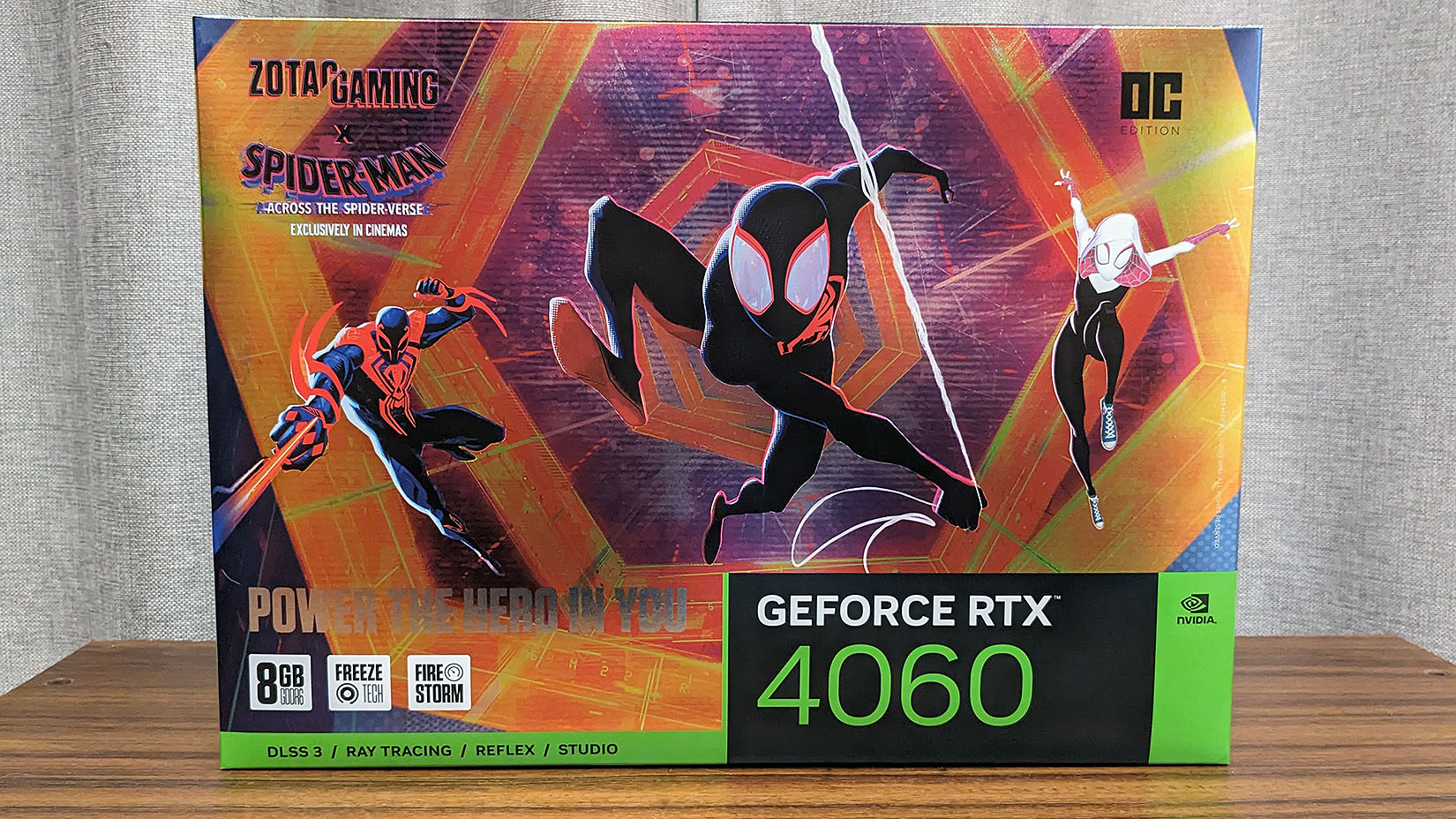
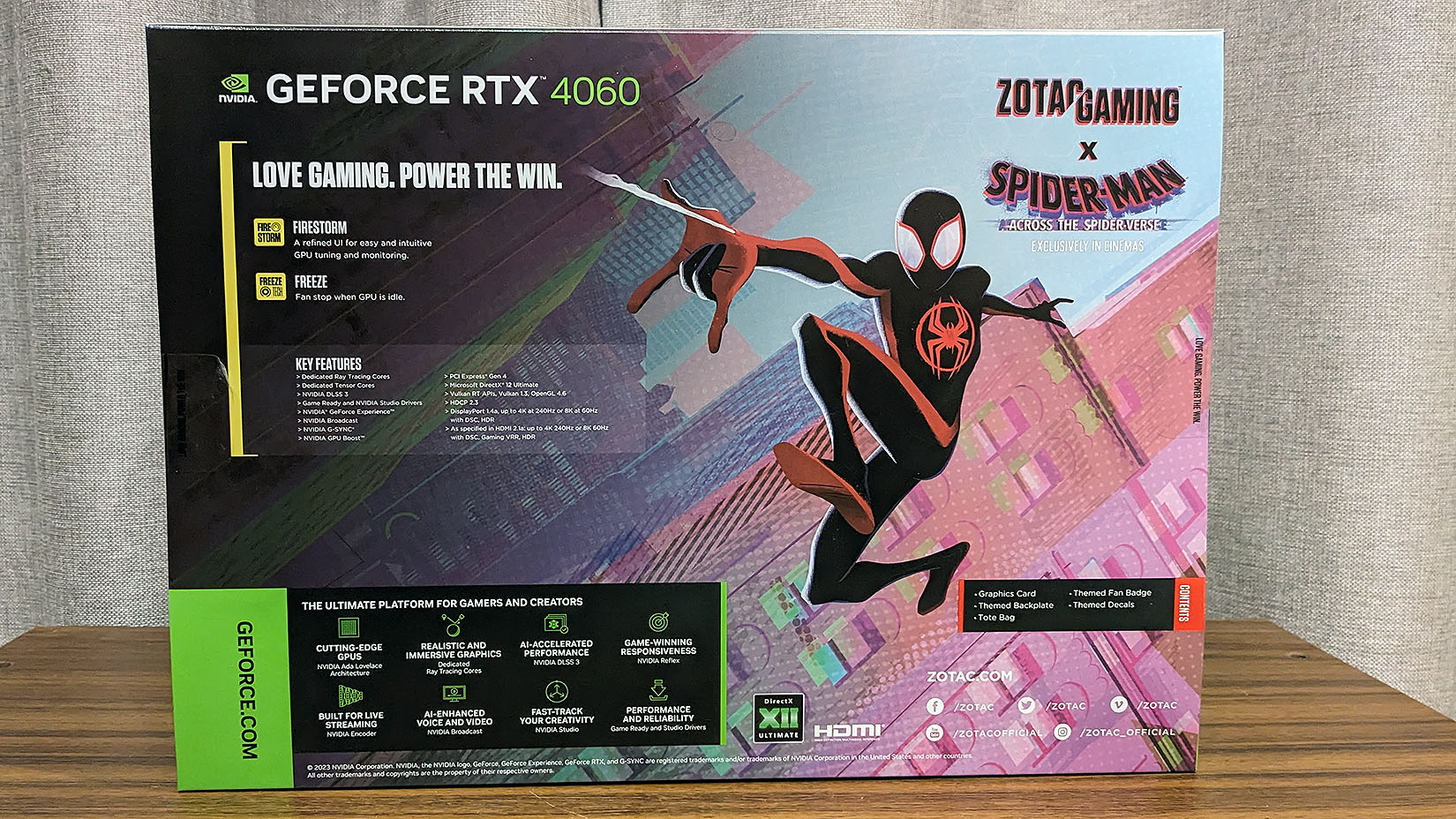
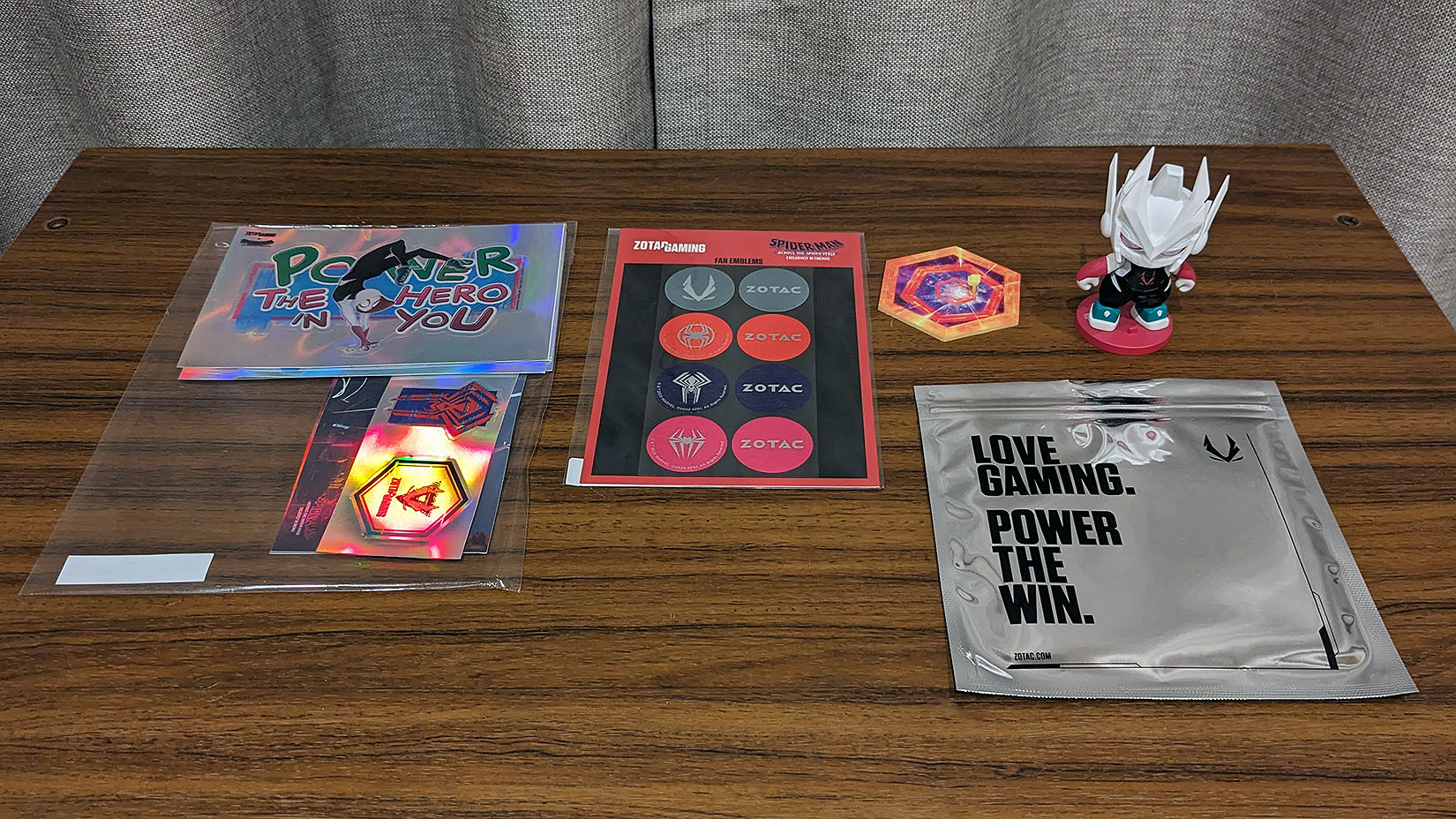
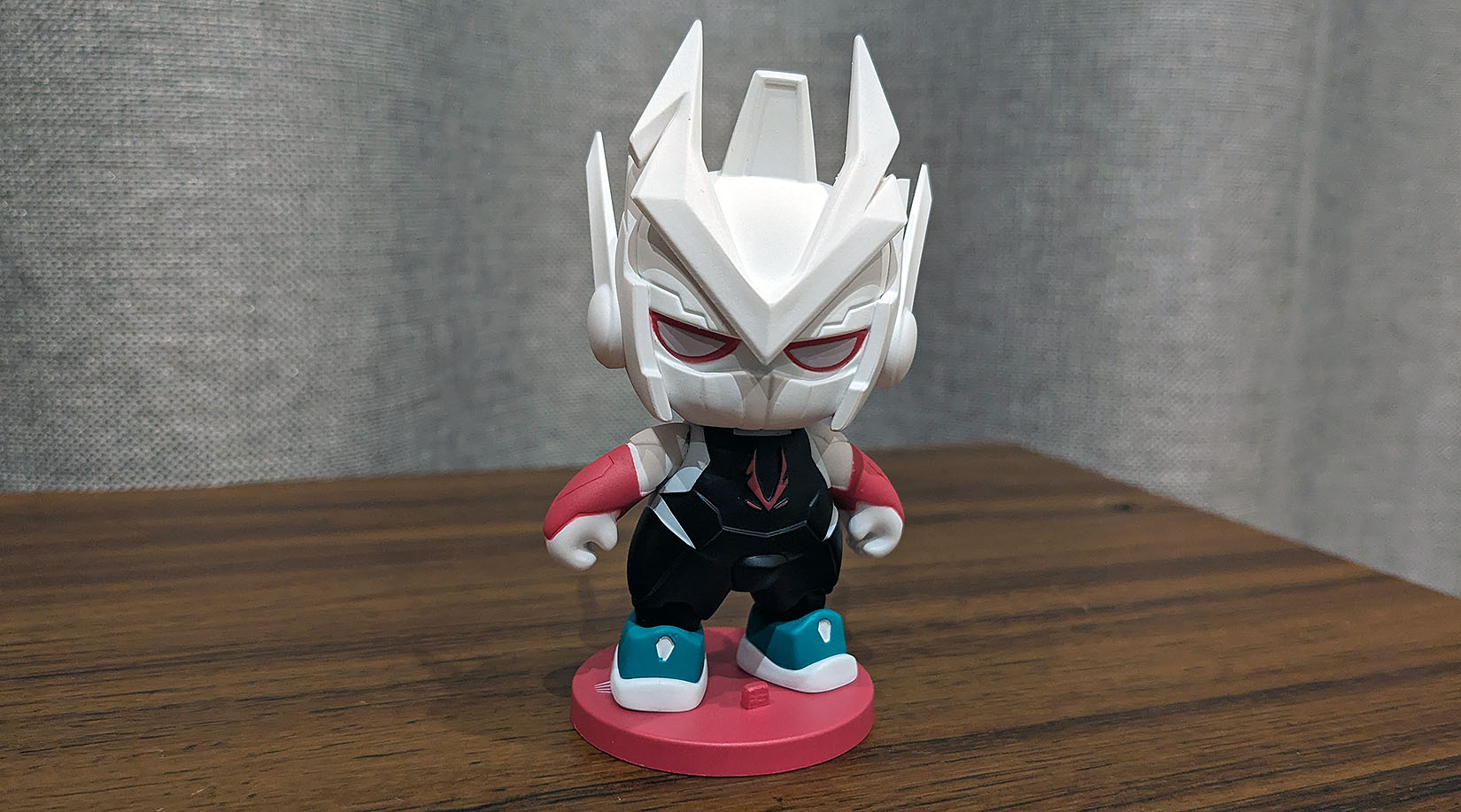
Apart from the Spider-Man branding, the rest of the card is fairly standard RTX 4060 fare. The AD107 GPU that lies at the heart of the card is made with a custom TSMC 4N process. It includes 24 Streaming Multiprocessors (SMs) giving it 3072 CUDA cores, 24 RT cores and 96 Tensor cores. These counts are disappointingly lower than those of the RTX 3060 12GB.
As is the case for all RTX 4060's, the inclusion of just 8GB of VRAM and a 128-bit bus is disappointing for what is ostensibly a mid range graphics card. It's hard to get past the fact that the RTX 3060 had 12GB over a 192-bit bus, giving it both a capacity and bandwidth advantage.
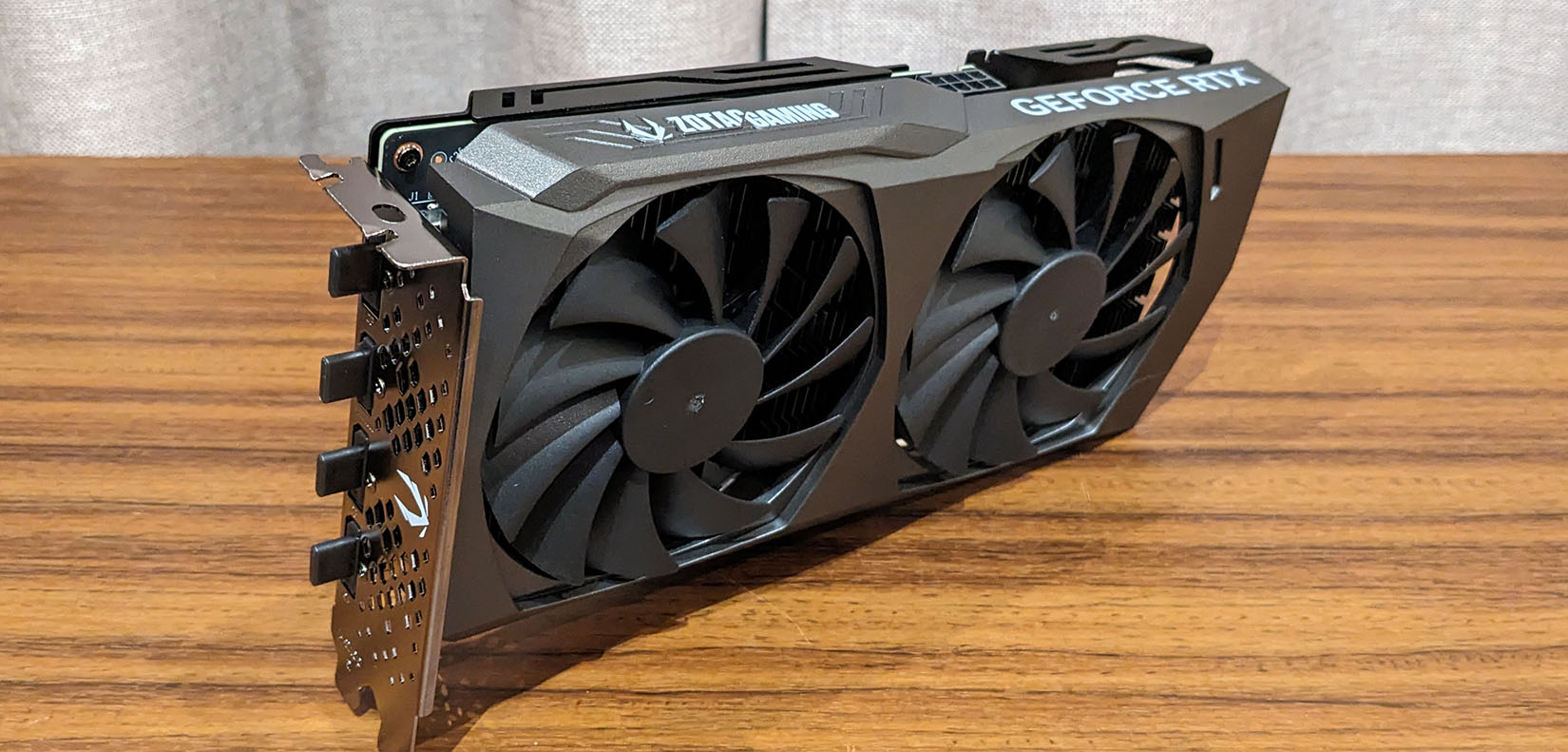
Where DLSS 3 and Frame Generation is supported, it works and it works well.
Nvidia says that the inclusion of 24MB of L2 cache (compared to the 3MB of the RTX 3060) significantly reduces VRAM calls and reliance on a large memory buffer, but when we had cards 15 years ago with 512-bit buses, it's corner cutting however you spin it.
If the underlying performance of the RTX 4060 is on the underwhelming side, then the addition of DLSS 3 with Frame Generation capabilities will help. Though DLSS 3's performance gains don't transform the card into one that's natively twice as fast, it is a great thing if you're suffering from sub-60 fps slowdowns and need that extra boost to get you into the realm of smooth gameplay, particularly if you must enable demanding ray tracing effects.
Where DLSS 3 and Frame Generation is supported, it works and it works well. But as it requires per game support, it's not the all conquering technology that Nvidia says it is. It might be one day.
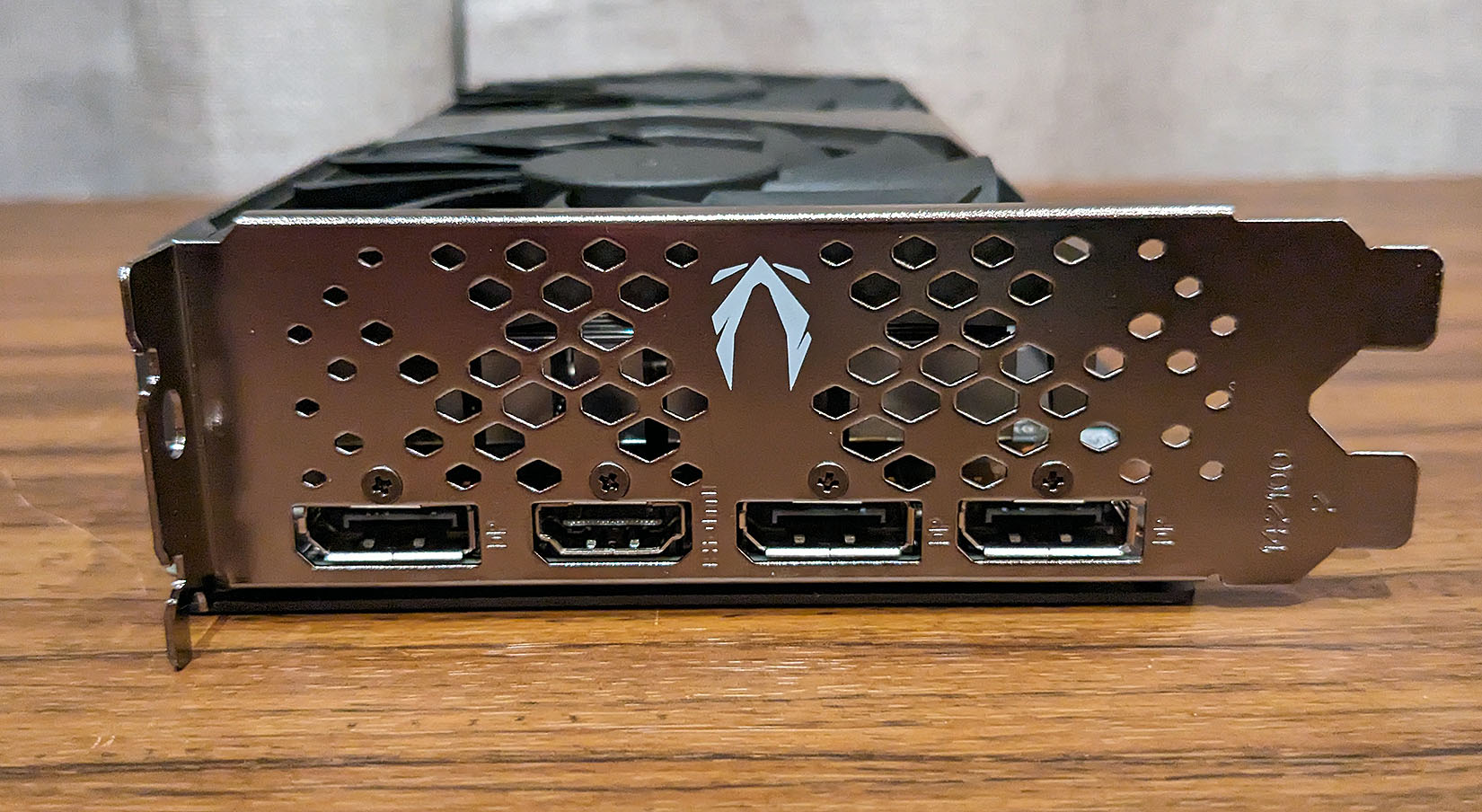
Other notable specifications include a PCIe 4.0 x8 interface and an excellent 115W TDP. The performance per watt of the RTX 4060 is outstanding, meaning there's no need for the 16-pin 12VHPWR connector. A single 8-pin connector is enough.
CPU: Intel Core i9 12900K
Motherboard: Asus ROG Z690 Maximus Hero
Cooler: Corsair H100i RGB
RAM: 32GB G.Skill Trident Z5 RGB DDR5-5600
Storage: 1TB WD Black SN850, 4TB Sabrent Rocket 4Q
PSU: Seasonic Prime TX 1600W
OS: Windows 11 22H2
Chassis: DimasTech Mini V2
Monitor: Dough Spectrum ES07D03
The Zotac RTX 4060 Spider-Man card is a generally well built card with dual fans, a full length backplate and a predominantly dark gray design. It features an insignificant factory overclock of 15MHz over the base RTX 4060 specification. It comes with 3 x DisplayPort 1.4a and a single HDMI 2.1 connector.
The compact dual fan cooler features a zero RPM mode and takes up two slots. It's not a cheeky 2.5 slots, meaning it's definitely small form factor friendly. Its 223mm length isn't the shortest you'll come across but it's ok. Interestingly, there's a good amount of empty space towards the end of the shroud. The PCB doesn't extend beyond the PCIe slot connector.
Don't forget to download Zotac's FireStorm control utility should you wish to mess with overclocking or the fan speeds.
1080p gaming and 3DMark performance
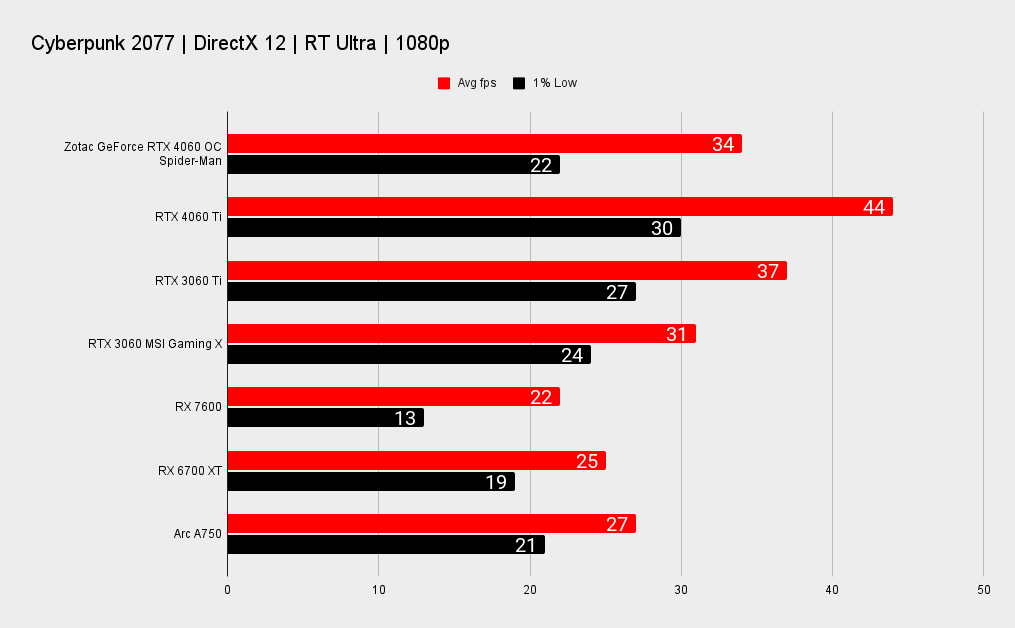

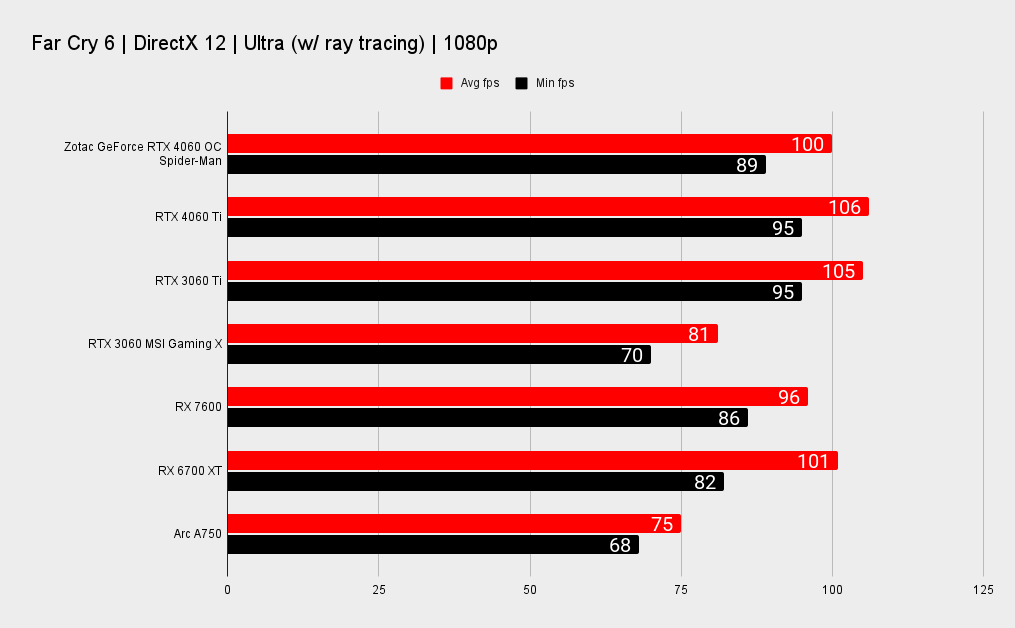

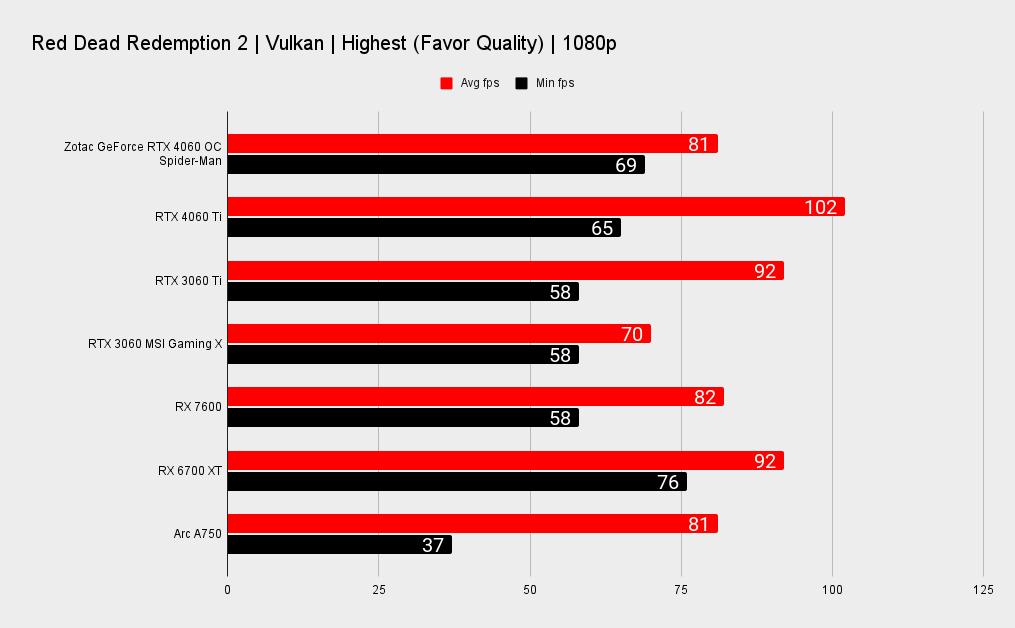


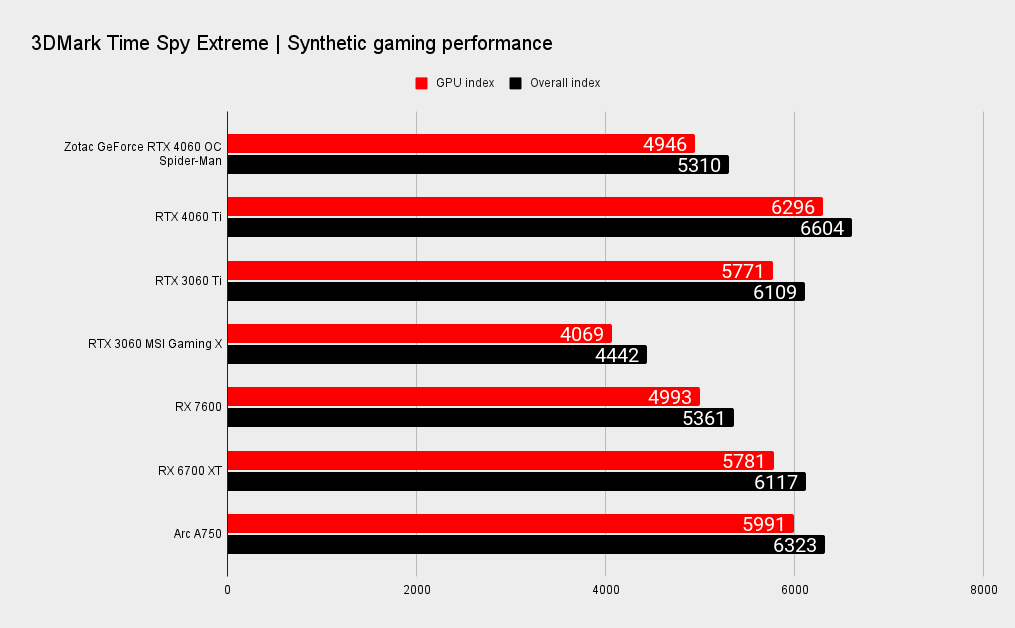
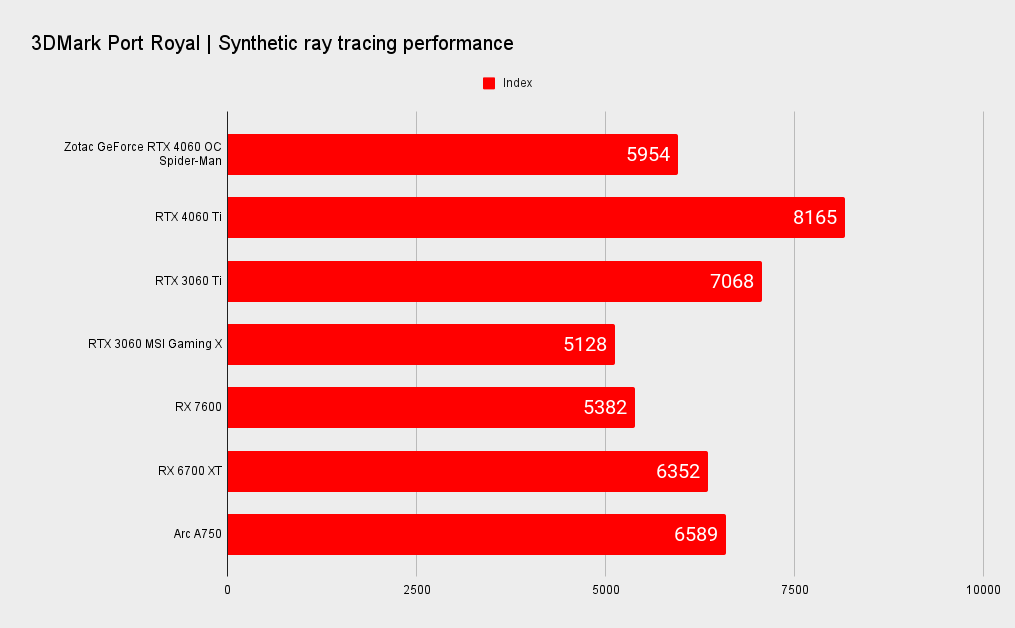
1440p gaming performance

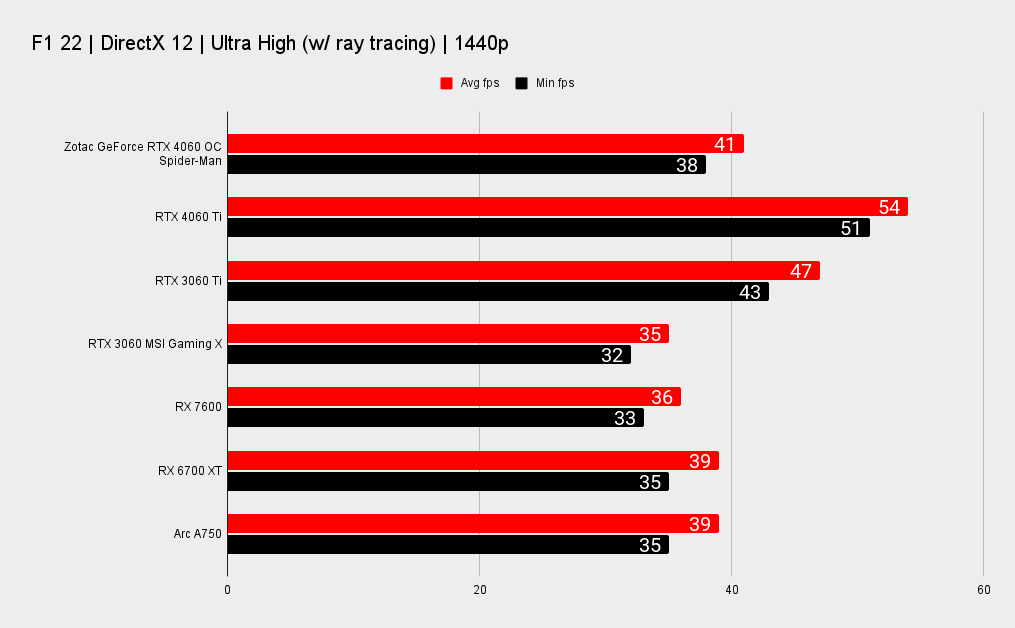

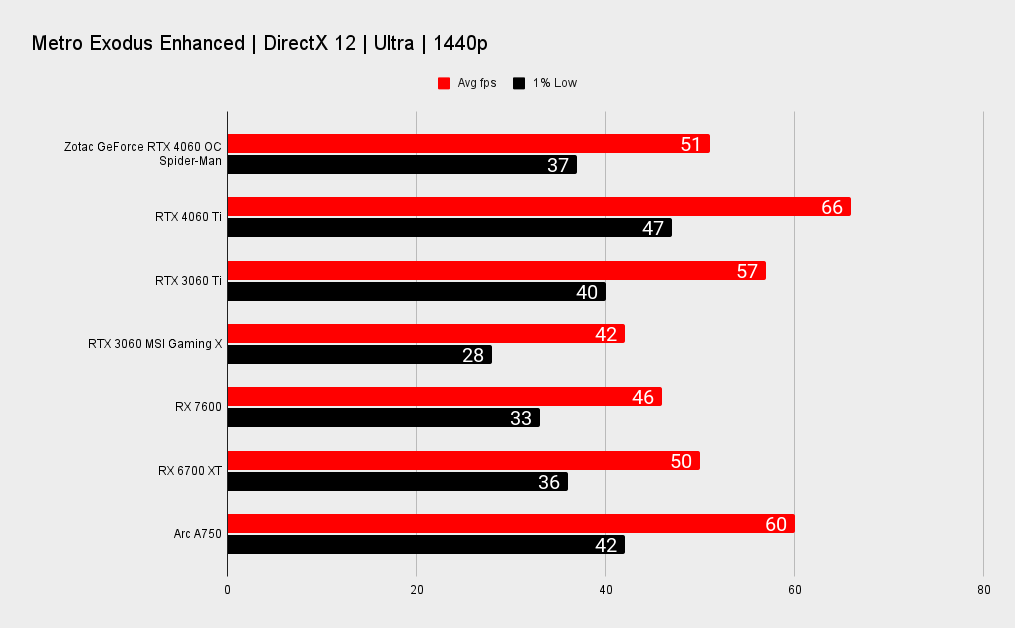
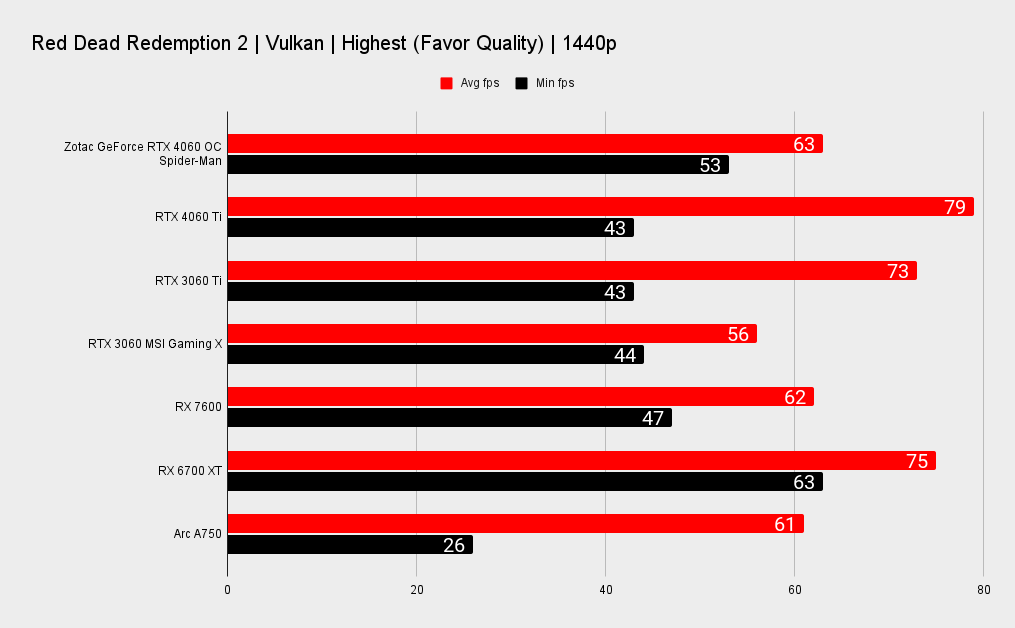
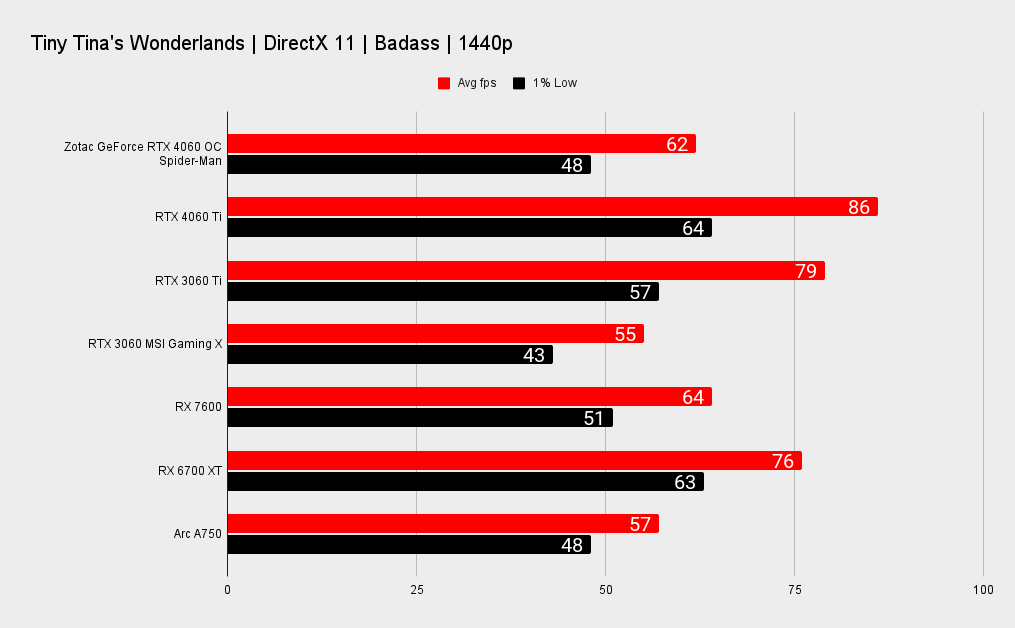
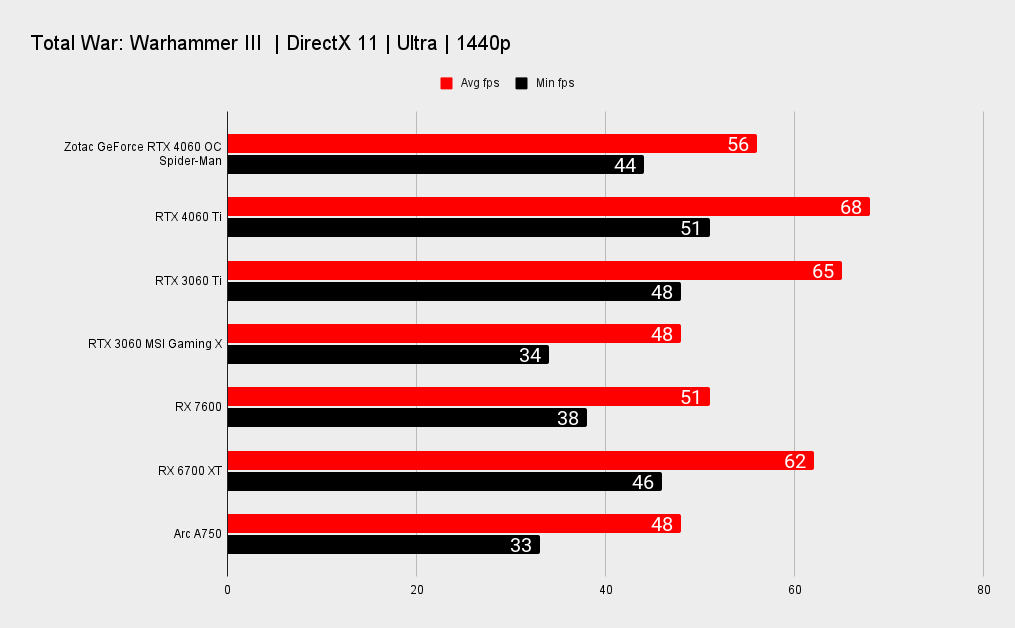
System performance

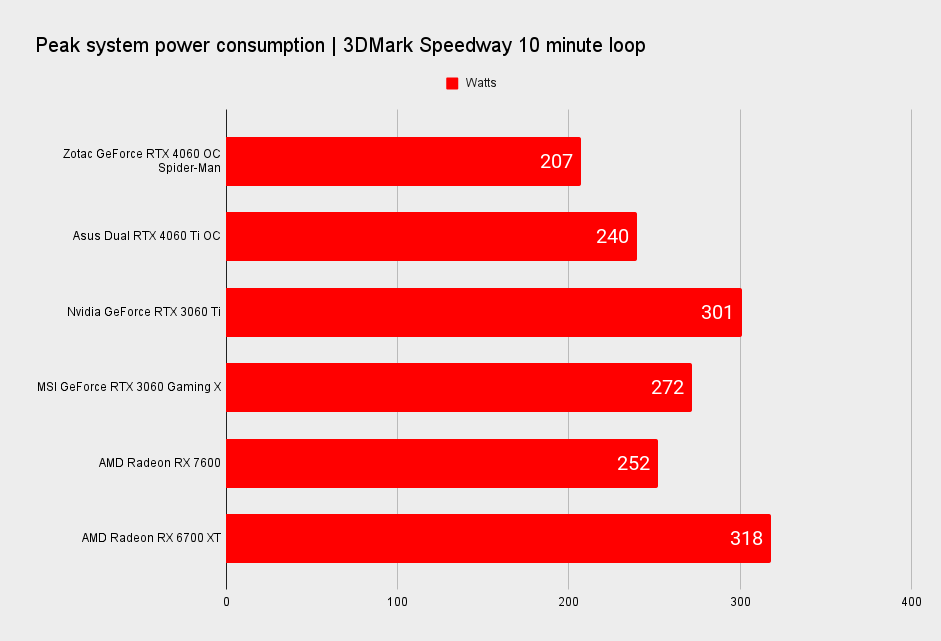
✅ The card you're replacing is a few years old: A mid range card from a few years back will struggle to hold playable frame rates at 1080p with high settings. The RTX 4060 will deliver a major performance uplift if your card lacks VRAM too.
✅ You're a Spider-Man superfan: The included stickers and decals are pretty cool if you're a fan of the webslinger.
❌ You already own a mid range RTX 30 or RX 6000-series GPU: The RTX 4060 isn't far enough ahead of last generation mid tier cards to justify the outlay. Additionally, the RTX 4060's 8GB frame buffer is likely to become a bottleneck in the years ahead.
❌ You demand a silent card: The Zotac RTX 4060 Spider-Man edition isn't loud per-se, but if silent gaming is paramount to you, there are quieter options, particularly those with larger (and more expensive) triple fan coolers.
As the Zotac RTX 4060 features a core clock that's similar to the MSI RTX 4060 Ventus 2X we reviewed at launch, the performance of the two cards falls mostly within a margin of error.
The RTX 4060 is happiest at 1080p, and its able to run most games at high settings. However the most demanding titles still require backing off a bit on the ray tracing or AA to stay around that 60 fps mark, or improve the 1% lows.
At 1440p, the limitations of the RTX 4060 become apparent. It just doesn't have the horsepower to run everything maxed out, though with a dash of DLSS and Frame Generation, 1440p isn't beyond it. As long as you don't play games with huge textures that burden the 8GB frame buffer.
The card most comparable to the Zotac, and other RTX 4060 to the Radeon RX 7600 which is becoming an attractive proposition as its price drops towards the $250 mark. In ray traced games, the RTX 4060 is a generation ahead of AMD, but the RX 7600 draws pretty much level in raster performance, which absolutely matters, particularly in esport and older titles where ray tracing means diddly squat.
When it comes to thermal performance, the card never went over 64°C which is easily low enough to keep boost clocks of the card well above their rated levels. Though I use an open test bench free of the restrictions of a cramped case, the card's noise level was quite noticeable. Zotac has clearly programmed the cooler to run with a bias towards lower temperatures rather than minimal fan noise.
If you value silence above all else, the Zotac isn't the card for you. It's not loud by any means, but there are quieter options. I'd prefer to see temps a couple of degrees higher and gain a dB or two lower noise levels. Of course you can tweak the fan speeds yourself to match your needs.
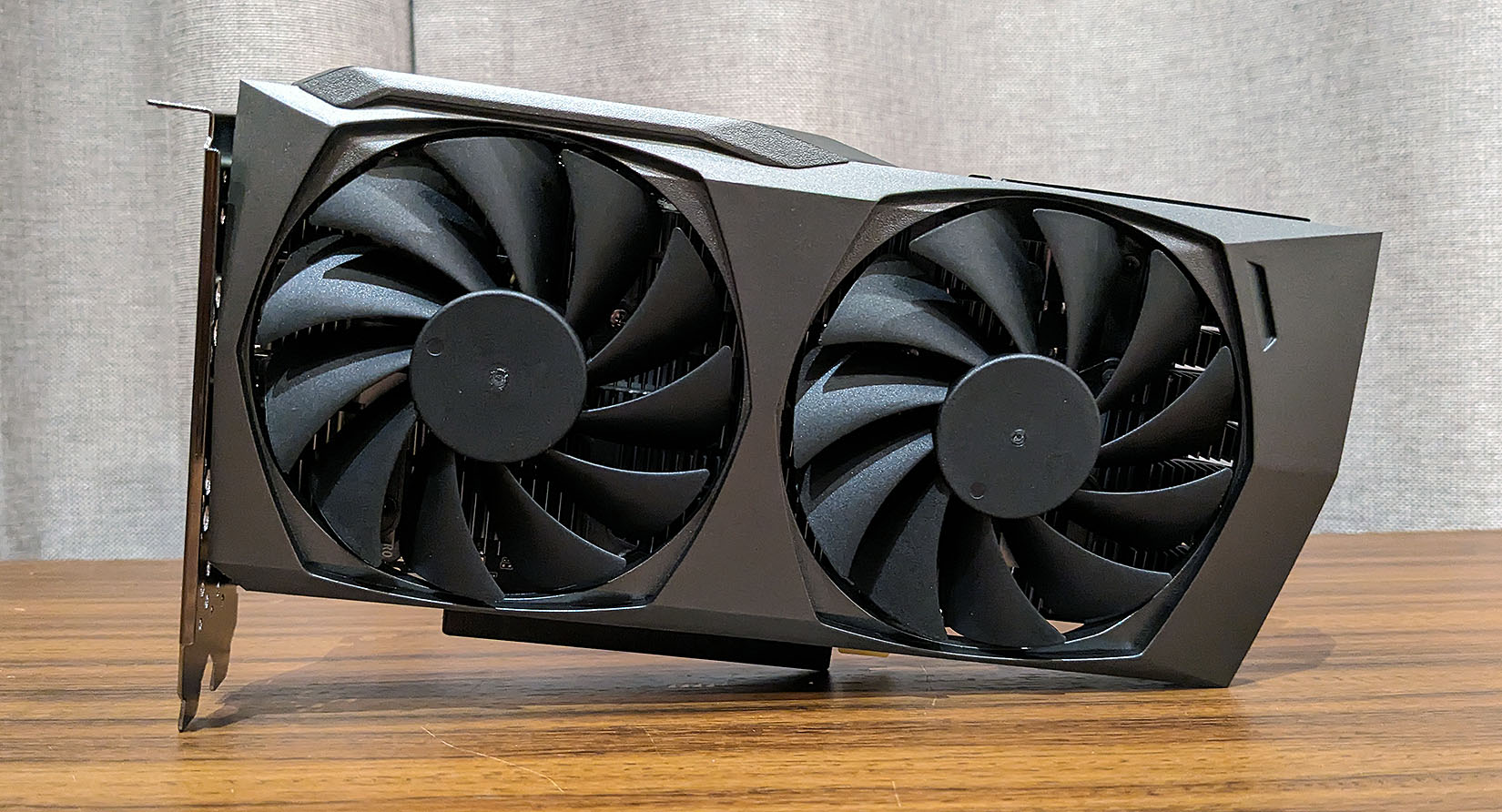

In conclusion, I will first return to the introduction. This is fundamentally a good card. Though that's if Nvidia had launched it as a $229-$250 RTX 4050 and not the $299 RTX 4060. Though Zotac's Spider-Man flavor is a very power efficient GPU that would make a good upgrade for users coming from cards that are a few years old.
I'd prefer to see temps a couple of degrees higher and gain a dB or two lower noise levels
This frame-slinger has good cooling performance, but it does come at the expense of more noticeable fan speeds. Though it's not like you'll notice one iota if you've got gunshots or explosions pinging away, or you wear headphones. And you can always tweak the speeds a little to suit your taste.
Having tested two RTX 4060s, the other being the MSI Ventus 2X I used for our launch review, I'd lean towards the Ventus on account of the card itself being a little quieter without losing any performance. But on the other hand, the Zotac has… Spider-Man!
As a kid I loved Spider-Man and my inner geek is impressed with the stickers and particularly the gorgeous box. If that means anything to you, then by all means the Zotac RTX 4060 Spider-Man is pretty cool, literally and figuratively.
The Zotac RTX 4060 Spider-Man comes with a nice bundle of extras and an excellent presentation. It doesn't cost more than the base $299 RTX 4060 price either. Zotac does what it can with what the Nvidia's AD107 GPU serves up, but its a little on the audible side when under load. If you don't mind that, and you love Spider-Man, then you'll be happy with this Zotac card.

Chris' gaming experiences go back to the mid-nineties when he conned his parents into buying an 'educational PC' that was conveniently overpowered to play Doom and Tie Fighter. He developed a love of extreme overclocking that destroyed his savings despite the cheaper hardware on offer via his job at a PC store. To afford more LN2 he began moonlighting as a reviewer for VR-Zone before jumping the fence to work for MSI Australia. Since then, he's gone back to journalism, enthusiastically reviewing the latest and greatest components for PC & Tech Authority, PC Powerplay and currently Australian Personal Computer magazine and PC Gamer. Chris still puts far too many hours into Borderlands 3, always striving to become a more efficient killer.
